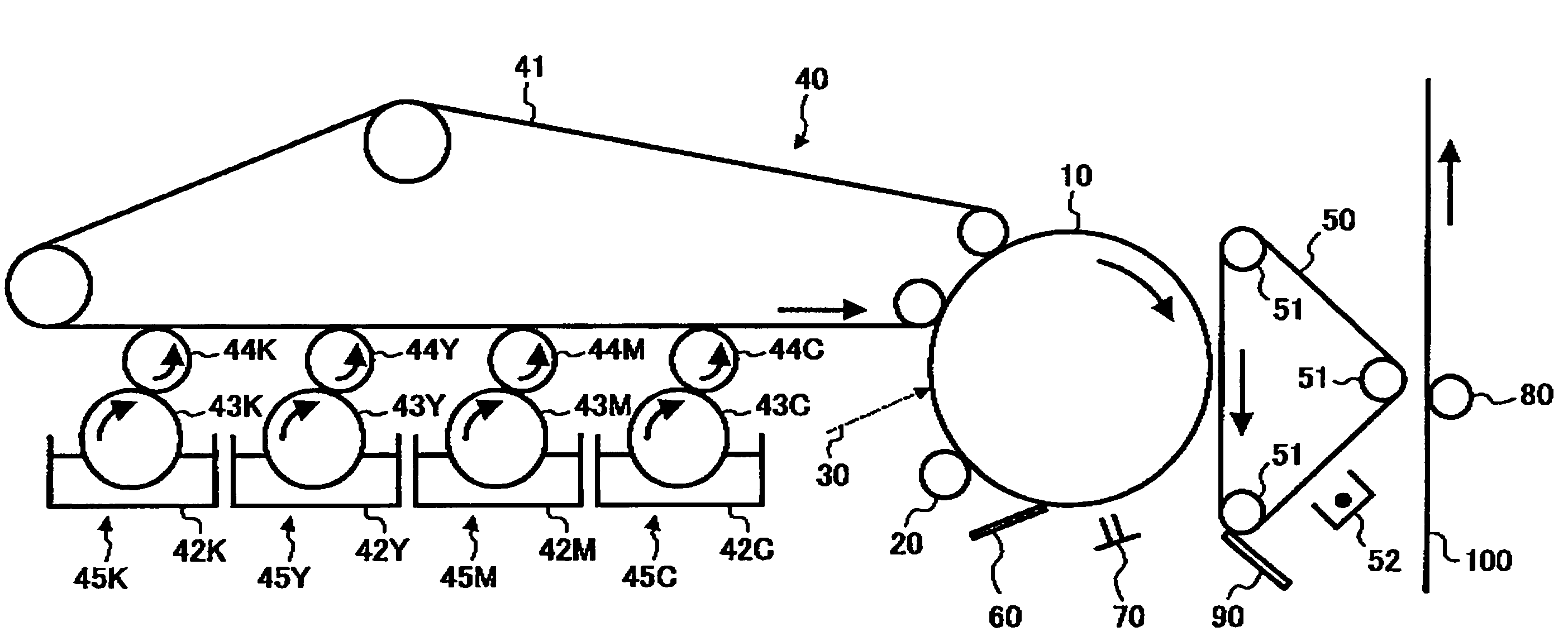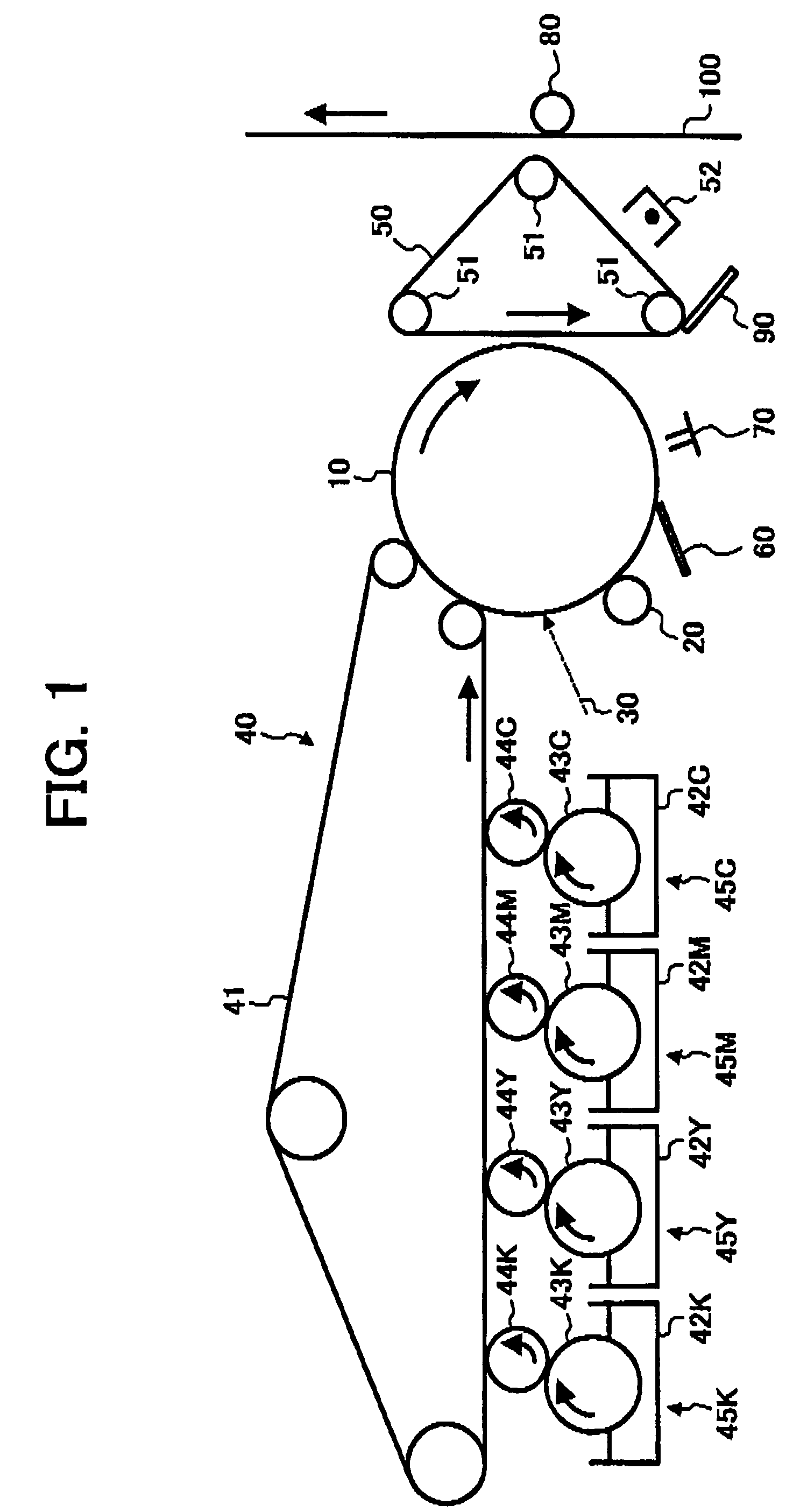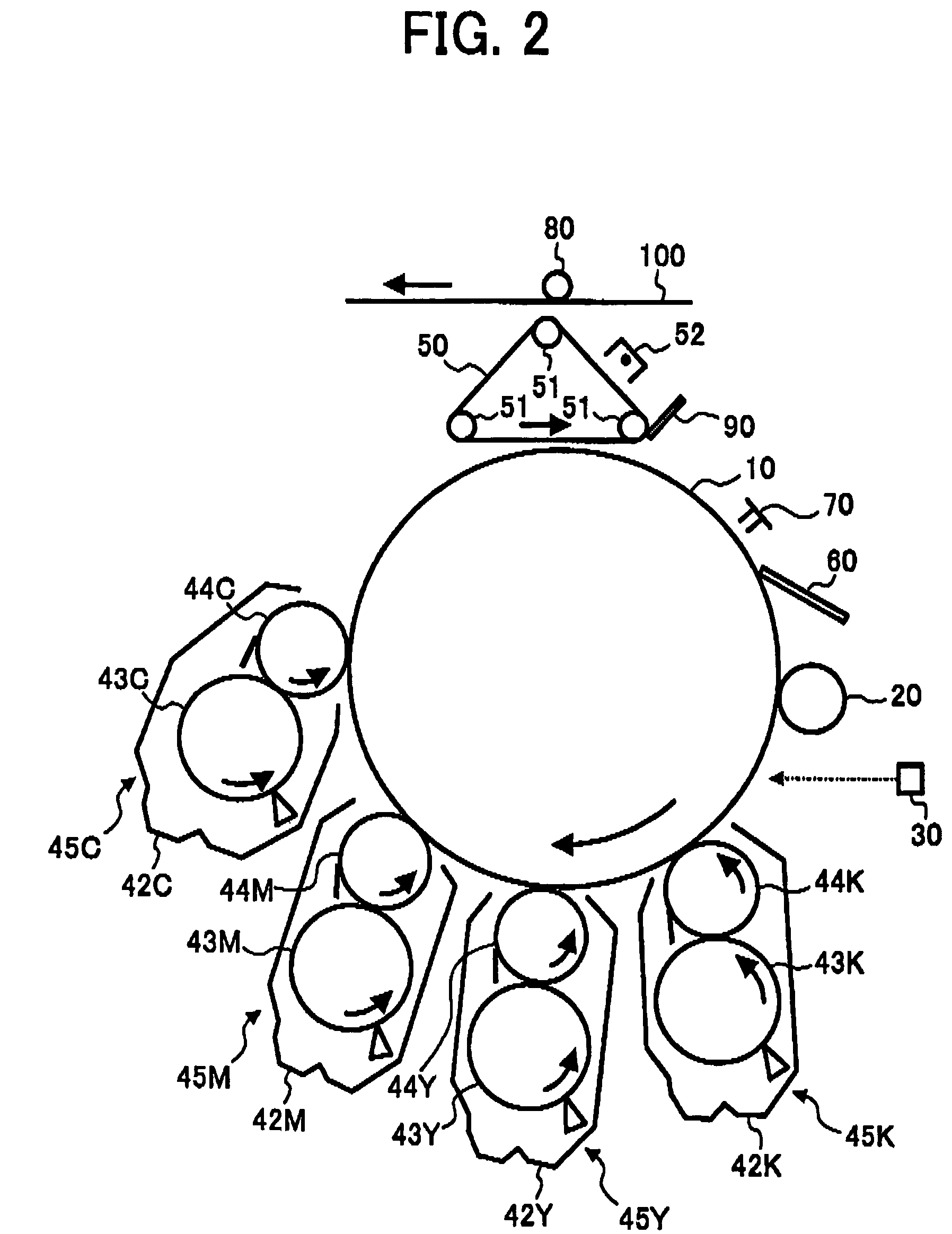Toner, developer, image forming apparatus and image forming method
a technology of image forming apparatus and developer, which is applied in the direction of electrographic process apparatus, instruments, developers, etc., can solve the problems of charge controlling agent, difficult uniform dispersibility of colorants, and user's not typically satisfied with the image quality produced, etc., to achieve high color accuracy, offset resistance, friction resistance, and glossiness. the effect of high quality
- Summary
- Abstract
- Description
- Claims
- Application Information
AI Technical Summary
Benefits of technology
Problems solved by technology
Method used
Image
Examples
example 1
[0221]683 parts of water, 11 parts of a sodium salt of an adduct of a sulfuric ester with ethyleneoxide methacrylate (ELEMINOL RS-30 from Sanyo Chemical Industries, Ltd.), 83 parts of styrene, 166 parts of methacrylate, 110 parts of butylacrylate and 1 part of persulfate ammonium were mixed in a reactor vessel including a stirrer and a thermometer, and the mixture was stirred for 30 min at 3,800 rpm to prepare a white emulsion therein. The white emulsion was heated to have a temperature of 75° C. and reacted for 4 hrs. Further, 30 parts of an aqueous solution of persulfate ammonium having a concentration of 1% were added thereto and the mixture was reacted for 6 hrs at 75° C. to prepare an aqueous dispersion a [particulate dispersion liquid 1] of a vinyl resin (a copolymer of a sodium salt of an adduct of styrene-methacrylate-butylacrylate-sulfuric ester with ethyleneoxide methacrylate). The [particulate dispersion liquid 1] was measured by LA-920 to find a volume-average particle d...
example 2
[0239]The procedure for preparation of the toner in Example 1 was repeated to prepare a toner except for the following procedure. Properties and evaluation results of the toner are shown in Tables 1 and 2 respectively.
[0240]378 parts of the [low-molecular-weight polyester 1], 100 parts of carnauba / rice wax (a weight ratio 7:3) and 947 parts of ethyl acetate were mixed in a reaction vessel including a stirrer and a thermometer, and the mixture was heated to have a temperature of 80° C. while stirred. After the temperature of 80° C. was maintained for 3 hrs, the mixture was cooled to have a temperature of 30° C. in an hour, and then 500 parts of the master batch 1 and 500 parts of ethyl acetate were added to the mixture and mixed for 1 hr to prepare a [material solution 2].
[0241]1,324 parts of the [material solution 2] were transferred into another vessel, and the carbon black and wax therein were dispersed by a beads mill (Ultra Visco Mill from IMECS CO., LTD.) for 7 passes under the...
example 3
[0244]The procedure for preparation of the toner in Example 1 was repeated to prepare a toner except for the following procedure. Properties and evaluation results of the toner are shown in Tables 1 and 2 respectively.
[0245]749 parts of the [pigment and wax dispersion liquid 1], 115 parts of the [prepolymer 1] and 2.9 parts of the [ketimine compound 1] were mixed in a vessel by a TK-type homomixer from Tokushu Kika Kogyo Co., Ltd. at 5,000 rpm for 3 min. 1,200 parts of the [aqueous phase 1] were added to the mixture and mixed by the TK-type homomixer at 13,000 rpm for 10 min to prepare an [emulsified slurry 2].
[0246]The [emulsified slurry 2] was put in a vessel including a stirrer and a thermometer. After a solvent was removed from the emulsified slurry 1 at 30° C. for 6 hrs, the slurry was aged at 45° C. for 10 hrs to prepare a [dispersion slurry 2].
PUM
| Property | Measurement | Unit |
|---|---|---|
| number-average particle diameter | aaaaa | aaaaa |
| diameter | aaaaa | aaaaa |
| diameter | aaaaa | aaaaa |
Abstract
Description
Claims
Application Information
 Login to View More
Login to View More - R&D
- Intellectual Property
- Life Sciences
- Materials
- Tech Scout
- Unparalleled Data Quality
- Higher Quality Content
- 60% Fewer Hallucinations
Browse by: Latest US Patents, China's latest patents, Technical Efficacy Thesaurus, Application Domain, Technology Topic, Popular Technical Reports.
© 2025 PatSnap. All rights reserved.Legal|Privacy policy|Modern Slavery Act Transparency Statement|Sitemap|About US| Contact US: help@patsnap.com



